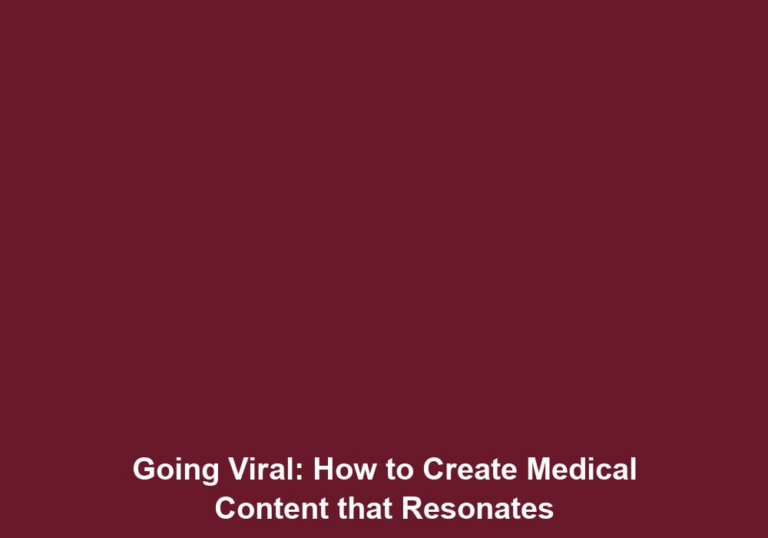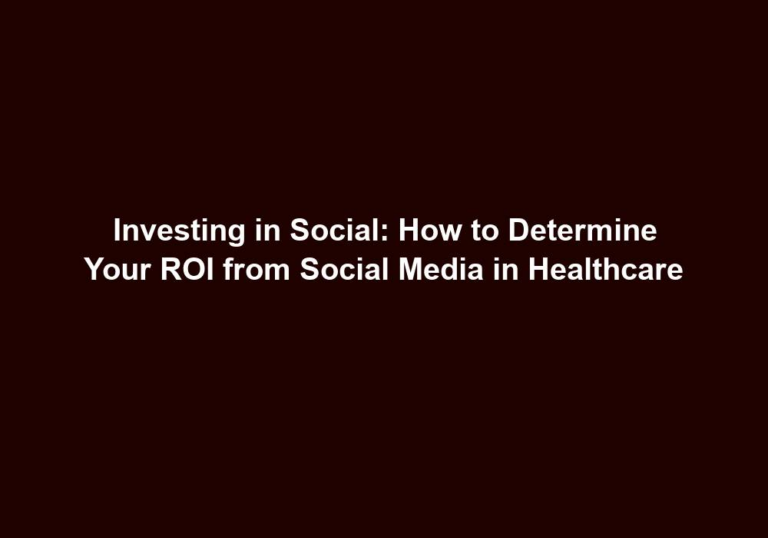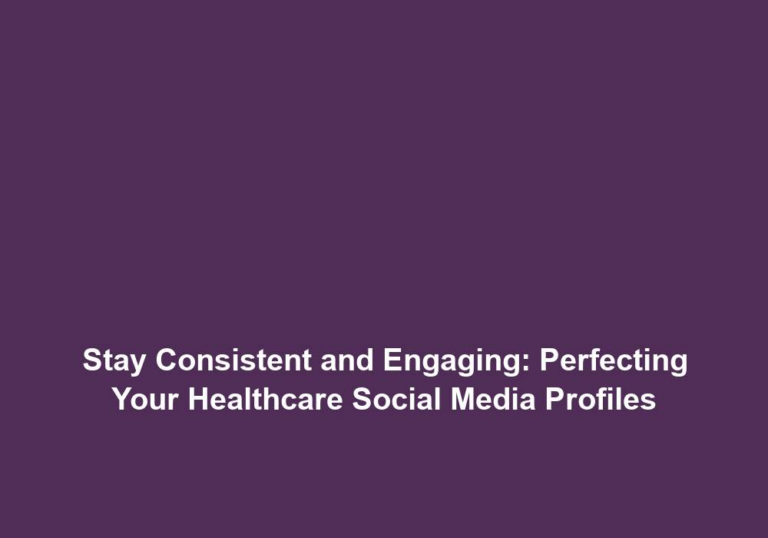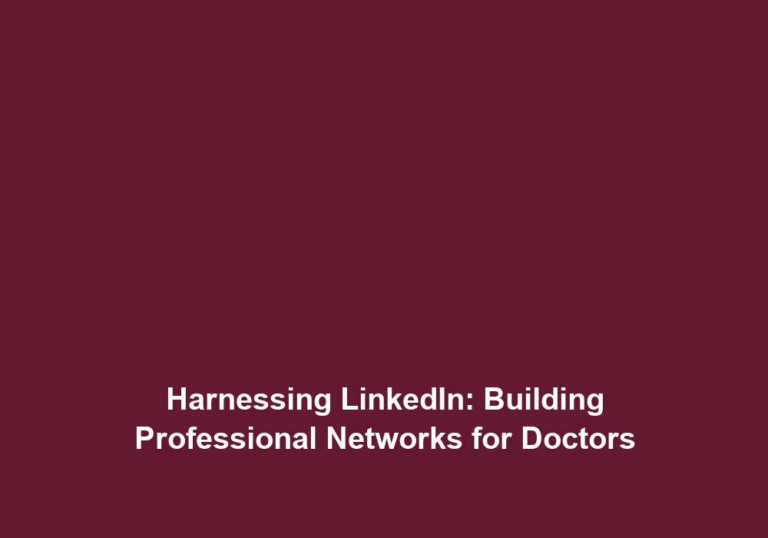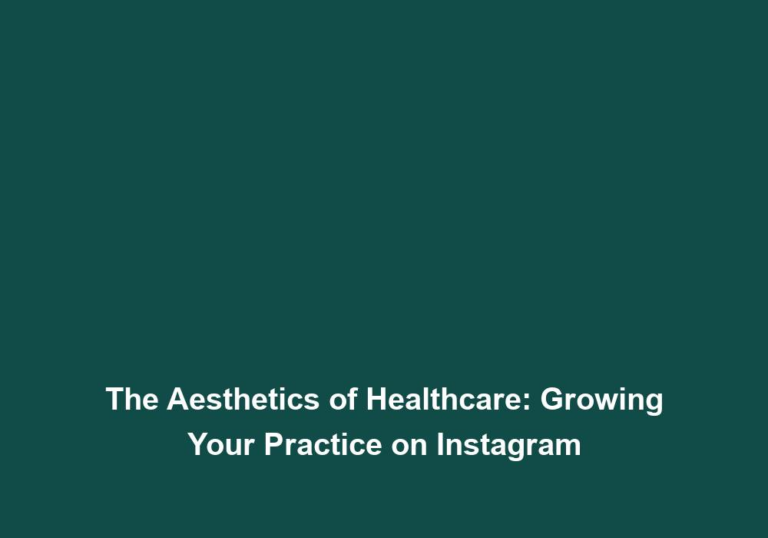Crafting a Cohesive Brand: Setting Up Social Media Profiles for Healthcare
In today’s digital age, it is essential for healthcare organizations to establish a strong online presence in order to effectively reach and engage with their target audience. Social media platforms offer a powerful tool for healthcare providers to connect, educate, and build trust with patients. However, setting up social media profiles for healthcare requires careful planning and strategic execution to ensure a cohesive brand image. In this article, we will explore the key steps involved in crafting a cohesive brand and setting up social media profiles for healthcare.
Why Social Media Matters for Healthcare
Social media has revolutionized the way people communicate, share information, and seek healthcare services. It provides a platform for healthcare providers to connect with patients, address their concerns, and share valuable health-related content. Here are some key reasons why social media matters for healthcare:
-
Engagement: Social media platforms allow healthcare organizations to engage with their audience in real-time, providing a personalized and interactive experience. This engagement can help build trust and establish strong relationships with patients.
-
Brand Building: By consistently sharing relevant and valuable content, healthcare providers can establish themselves as trusted sources of information, building a strong brand reputation. This brand reputation can attract new patients and differentiate the organization from competitors.
-
Patient Education: Social media enables healthcare organizations to educate patients about various health conditions, preventive measures, and treatment options, empowering them to make informed decisions. By sharing educational content, healthcare providers can promote health literacy and improve patient outcomes.
-
Community Building: Social media provides an opportunity for healthcare providers to foster a sense of community, connecting patients with one another and creating a supportive network. This sense of community can enhance patient experience and help patients feel more connected to the healthcare organization.
Step 1: Define Your Brand Identity
Before setting up social media profiles, it is crucial to define your brand identity. Your brand identity reflects the core values, mission, and unique selling proposition of your healthcare organization. It helps differentiate you from competitors and resonates with your target audience. Consider the following elements when defining your brand identity:
-
Mission Statement: Clearly articulate your organization’s mission and the purpose it serves in the healthcare industry. This mission statement should convey the organization’s commitment to providing high-quality care and improving patient outcomes.
-
Core Values: Identify the core values that guide your organization’s actions and decision-making. These core values should align with the needs and expectations of your target audience, demonstrating your organization’s commitment to patient-centered care.
-
Target Audience: Determine who your target audience is, including demographic information, preferences, and healthcare needs. Understanding your target audience will help you tailor your social media content to their specific needs and interests.
-
Unique Selling Proposition (USP): Define what sets your organization apart from competitors. What unique value do you offer to patients? This could be specialized expertise, innovative treatment approaches, or exceptional patient experience. Highlighting your USP in your social media content can attract and engage your target audience.
Step 2: Select the Right Social Media Platforms
Not all social media platforms are created equal, and your target audience may be more active on certain platforms than others. It is important to choose the right platforms that align with your brand and where your target audience is most likely to be found. Here are some popular social media platforms for healthcare:
-
Facebook: With over 2.8 billion monthly active users, Facebook offers a vast reach and allows for various content formats, including text, images, videos, and live streaming. It is an ideal platform for sharing educational content, patient testimonials, and updates about your healthcare organization.
-
Twitter: Twitter’s fast-paced nature makes it ideal for sharing real-time updates, news, and engaging in conversations with patients and healthcare professionals. It is a great platform for sharing industry insights, responding to patient queries, and participating in healthcare-related discussions.
-
LinkedIn: LinkedIn is a professional networking platform that can be utilized to establish thought leadership, connect with industry professionals, and recruit healthcare talent. It is a valuable platform for sharing research articles, industry trends, and career opportunities within your organization.
-
Instagram: If your healthcare organization focuses on visual content, such as before-and-after photos, educational illustrations, or wellness tips, Instagram can be a powerful platform. It allows you to showcase your organization’s expertise through visually appealing content and engage with your audience through comments and direct messages.
Step 3: Optimize Your Social Media Profiles
To create a cohesive brand image across your social media profiles, it is crucial to optimize them consistently. Here are some key elements to consider when optimizing your profiles:
-
Profile Picture: Use a high-quality, recognizable profile picture, such as your organization’s logo, to enhance brand recognition. This profile picture should be consistent across all social media platforms to create a cohesive visual identity.
-
Bio/About Section: Craft a concise and compelling bio that clearly communicates your organization’s mission, values, and expertise. Use keywords related to healthcare to improve discoverability and ensure that your target audience can easily understand what your organization stands for.
-
URL/Website: Include a link to your organization’s website in your profile to drive traffic and provide more information to interested followers. This website should be user-friendly, mobile-responsive, and provide valuable resources for patients seeking more information about your services.
-
Consistent Branding: Use consistent visual elements, such as colors, fonts, and imagery, across all your social media profiles to enhance brand recognition and create a cohesive experience. This consistent branding will help your audience associate your organization with a specific look and feel.
Step 4: Develop a Content Strategy
Creating and sharing valuable content is essential for driving engagement and establishing your healthcare organization as a thought leader. Develop a content strategy that aligns with your brand identity and resonates with your target audience. Consider the following tips:
-
Content Themes: Identify key themes or topics that are relevant to your audience and align with your organization’s expertise. This can include health tips, patient success stories, industry news, and educational resources. By focusing on these themes, you can provide valuable information that addresses the needs and interests of your target audience.
-
Content Calendar: Create a content calendar to plan and schedule your social media posts in advance. This ensures consistency and allows for timely content creation. Your content calendar should include a mix of educational content, promotional content, and interactive content to keep your audience engaged and interested.
-
Visual Content: Incorporate visual content, such as images, infographics, and videos, to make your posts more engaging and shareable. Visual content is more likely to capture the attention of your audience and can convey complex information in a digestible format. Use high-quality visuals that are relevant to your content and align with your brand’s visual identity.
-
Hashtags: Utilize relevant hashtags to improve the discoverability of your posts and reach a wider audience interested in specific healthcare topics. Research popular healthcare hashtags and include them strategically in your captions or comments. This will help your content appear in relevant search results and increase its visibility.
Step 5: Engage and Monitor
Social media is not just about broadcasting content; it is also about actively engaging with your audience. Responding to comments, addressing queries, and participating in conversations are essential to building strong relationships. Additionally, monitoring your social media profiles allows you to track engagement, gather feedback, and make data-driven improvements to your strategy.
In conclusion, crafting a cohesive brand and setting up social media profiles for healthcare requires careful planning and execution. By defining your brand identity, selecting the right platforms, optimizing your profiles, developing a content strategy, and actively engaging with your audience, you can establish a strong online presence and effectively connect with patients in the digital realm. Remember, social media is a powerful tool, and when used strategically, it can elevate your healthcare organization’s reputation and amplify your impact.


